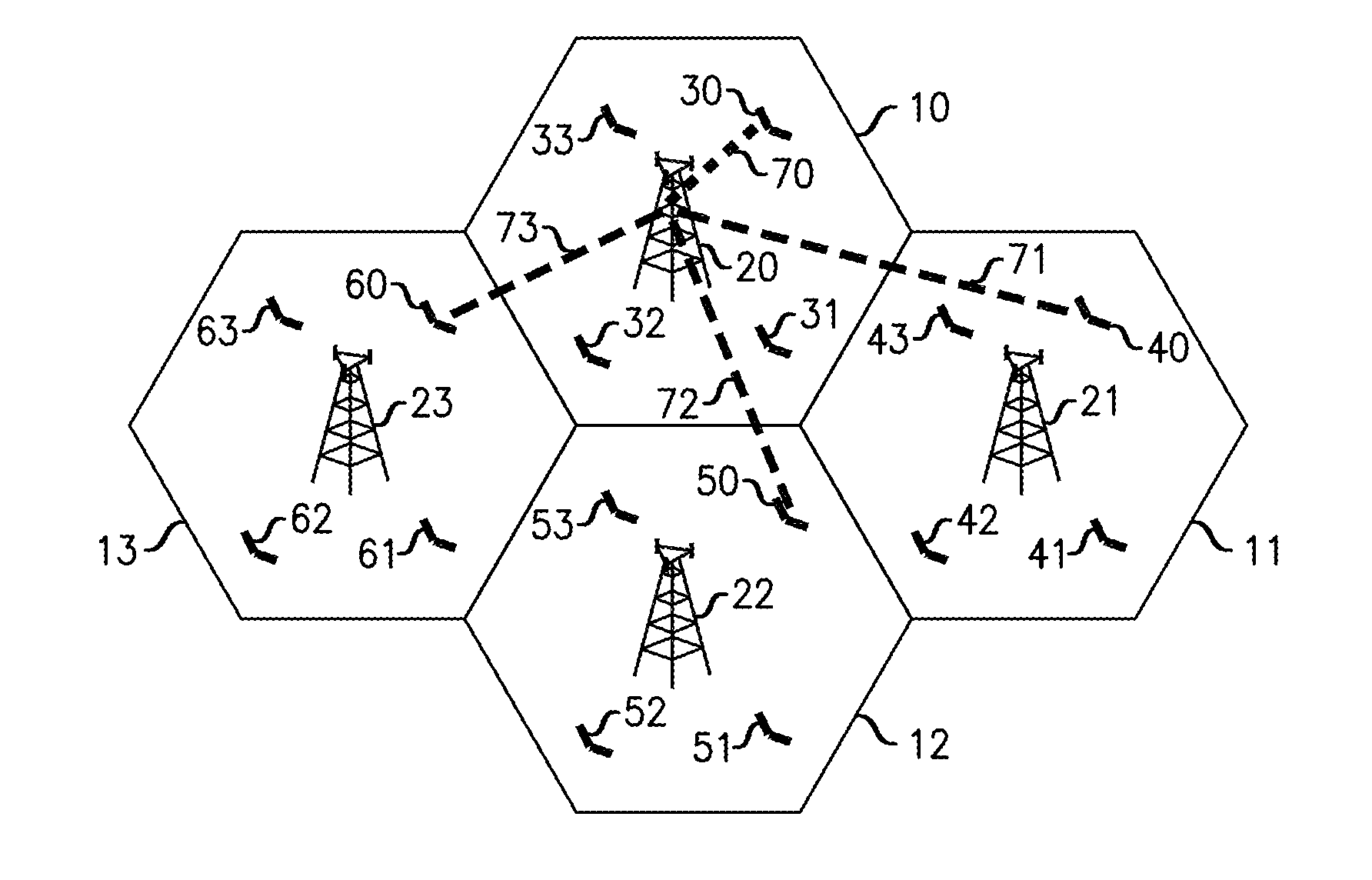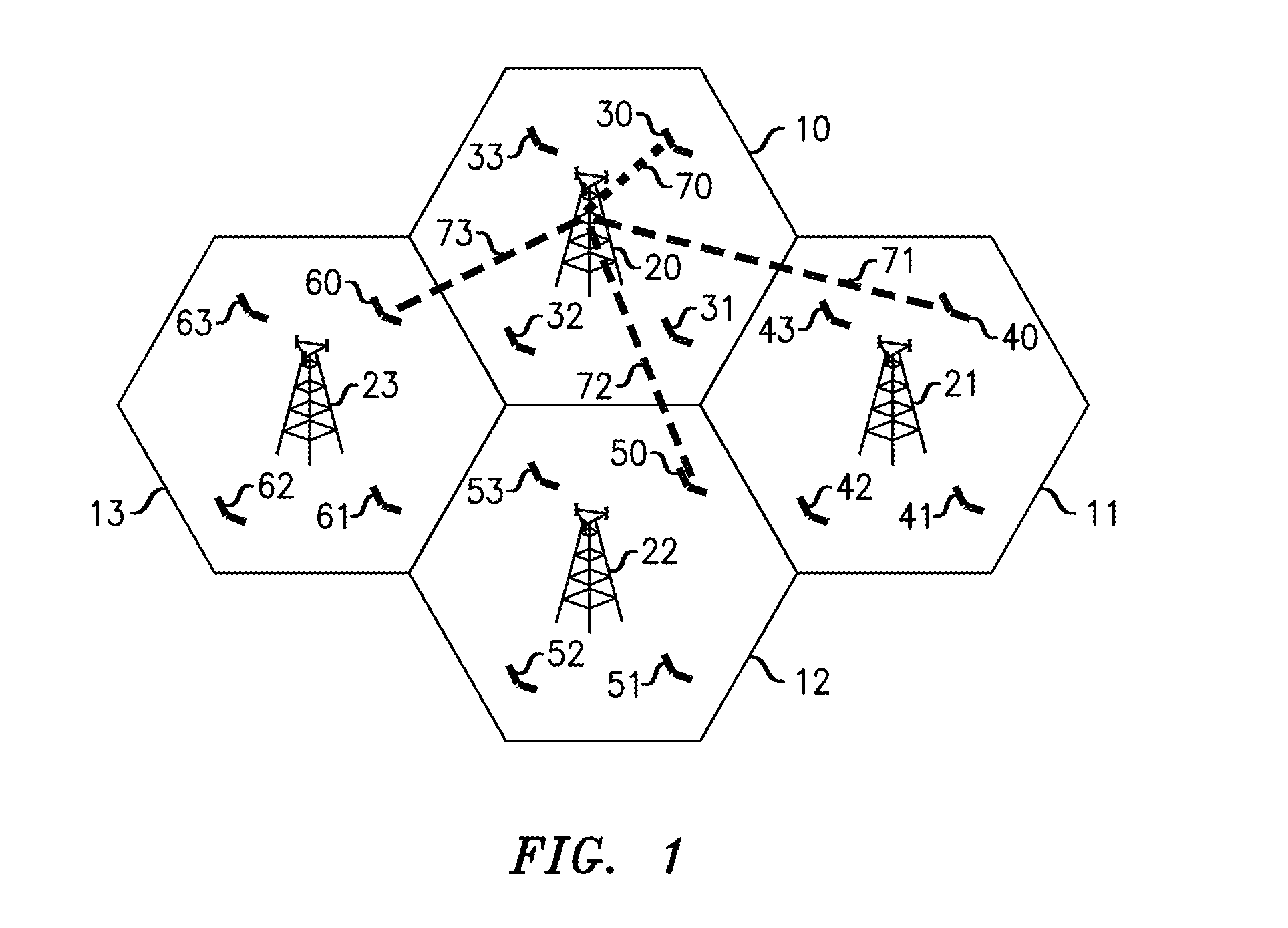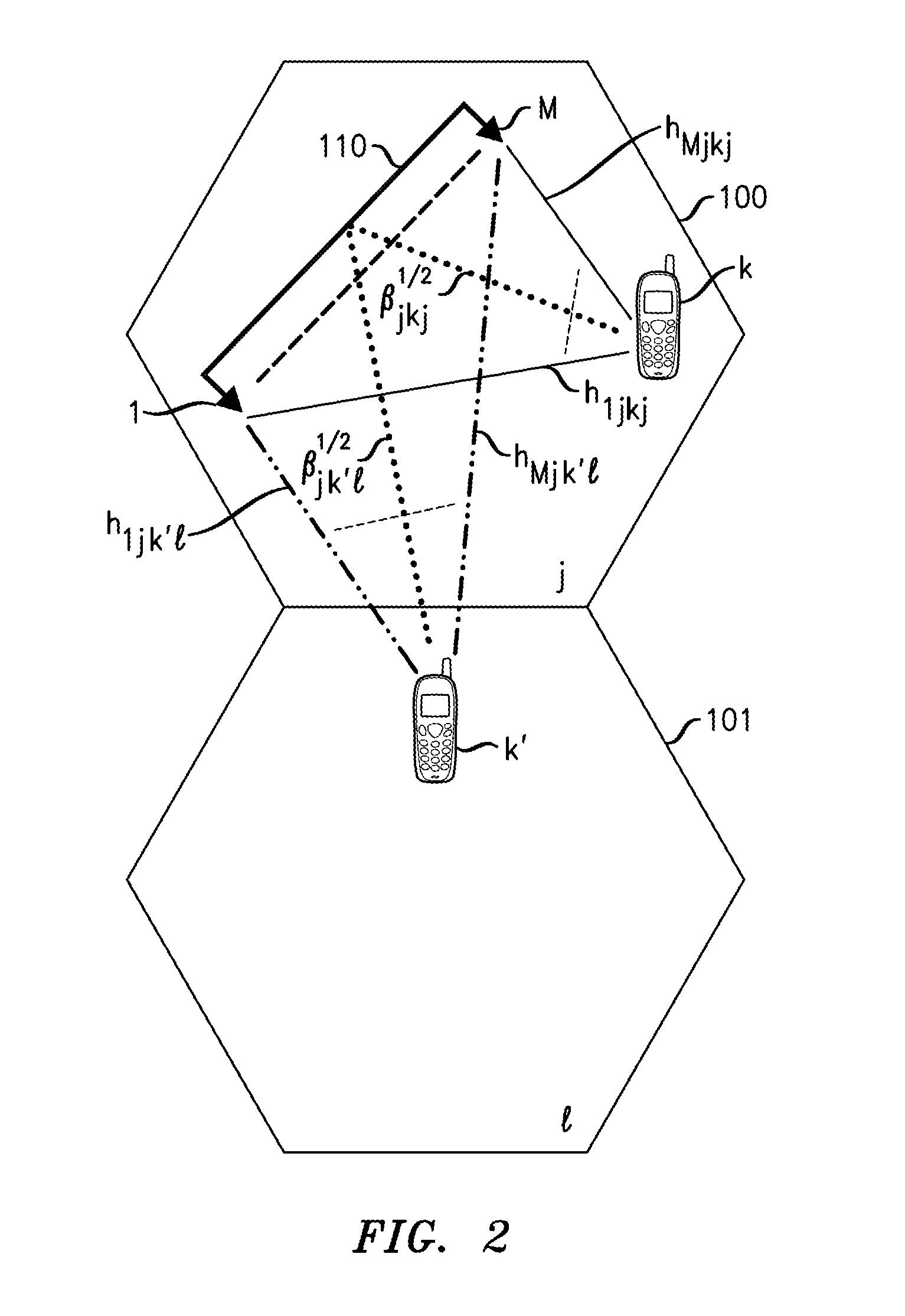Large-Scale Antenna Method And Apparatus Of Wireless Communication With Suppression Of Intercell Interference
a large-scale antenna and wireless communication technology, applied in wireless communication, power management, wireless commuication services, etc., can solve the problems of no coherence time to delay, no more, and relatively small number of orthogonal pilot sequences available, so as to mitigate interference in said reverse-link signals and mitigate inter-cell interferen
- Summary
- Abstract
- Description
- Claims
- Application Information
AI Technical Summary
Benefits of technology
Problems solved by technology
Method used
Image
Examples
Embodiment Construction
[0031]A message-carrying signal transmitted from a base station antenna array during one channel use interval is referred to here as a “symbol”. A symbol is distributed in space and frequency, because each base station has multiple antennas for transmission, and because each symbol will typically be distributed over multiple OFDM subcarriers or “tones”.
[0032]The term “antenna” refers to a base station antenna associated with a cell. Each cell has at most M antennas. The term “terminal” refers to a mobile user terminal.
[0033]The total number of cells is L. Each cell contains at most K terminals. The total number of pilot signals is K. The pilot signals are numbered 1, . . . , K. The pilot signals are assumed to be allocated to terminals such that in each cell, the k-th terminal is allocated pilot signal k.
[0034]Antenna mj is the m-th antenna of cell j. Terminal kl is the k-th terminal of cell l.
[0035]For tone n, the channel coefficient between antenna mj and terminal kl is gnmjkl. He...
PUM
 Login to View More
Login to View More Abstract
Description
Claims
Application Information
 Login to View More
Login to View More - R&D
- Intellectual Property
- Life Sciences
- Materials
- Tech Scout
- Unparalleled Data Quality
- Higher Quality Content
- 60% Fewer Hallucinations
Browse by: Latest US Patents, China's latest patents, Technical Efficacy Thesaurus, Application Domain, Technology Topic, Popular Technical Reports.
© 2025 PatSnap. All rights reserved.Legal|Privacy policy|Modern Slavery Act Transparency Statement|Sitemap|About US| Contact US: help@patsnap.com



